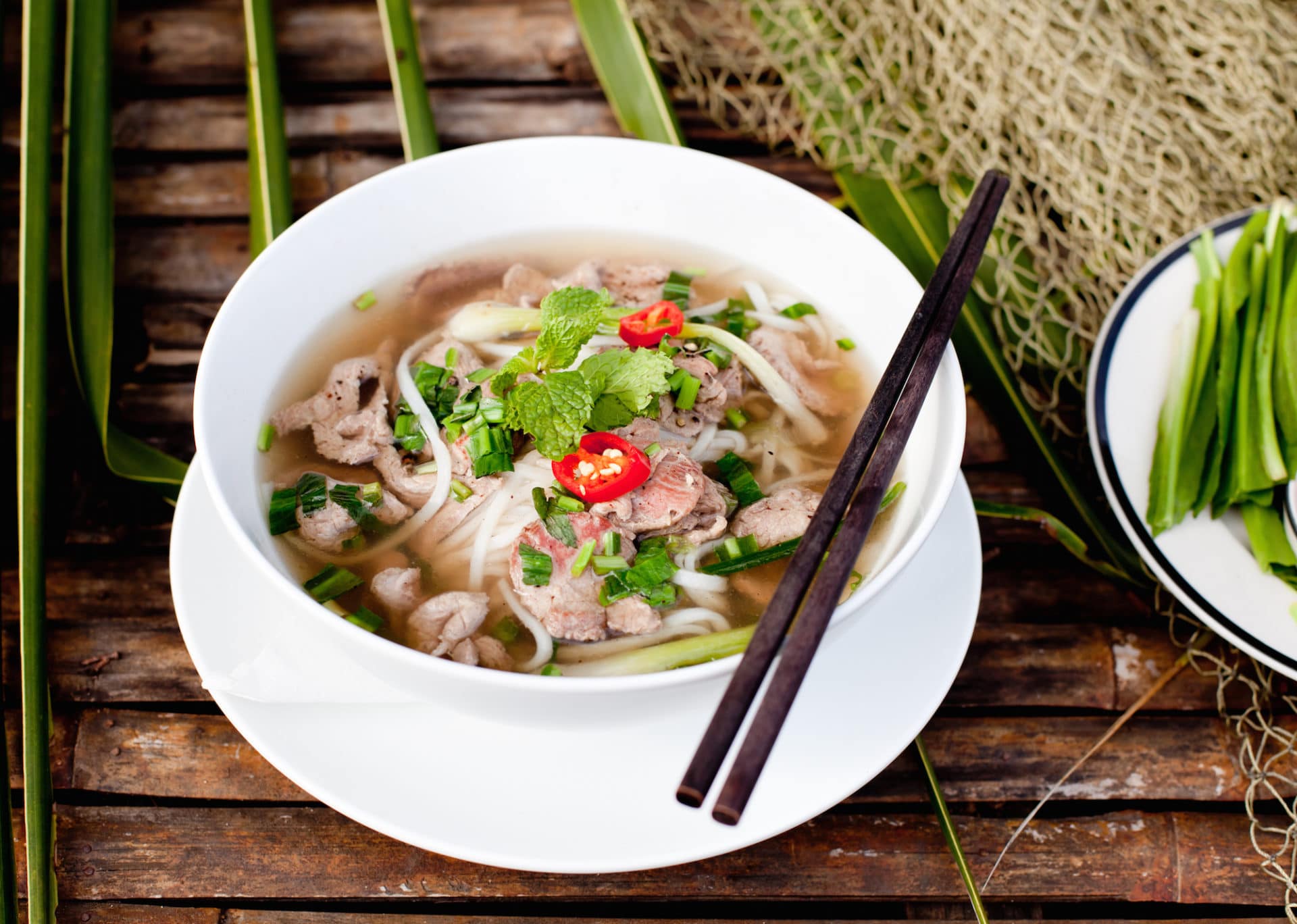
You’ve likely never even considered comparing French onion soup with Vietnamese pho or ban xeo with French crêpes, and yet there’s a good reason to do so: modern Vietnamese food has been heavily influenced by one of Europe’s most popular cuisines.
As for how and why… well, that’s a bit of a longer story.
Why The Link Between French & Vietnamese Food?
The link between these two cuisines stems from the colonial history of Vietnam.
Franco-Vietnamese relations started as early as the 17th century, with the arrival of Catholic missionaries in Vietnam. But it didn’t end there. France would eventually colonize Vietnam and Cambodia, forming the Indochinese Union in 1887, which would solidify French influence in Vietnam for the next 70 years.
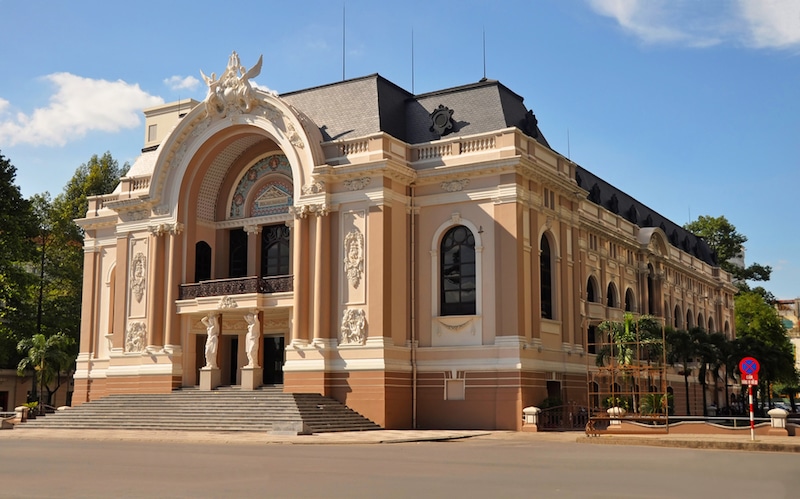
Through 1954, when the French evacuated Vietnam following the Geneva Accord of the same year, there was a French presence in Vietnam, a presence that included cultural ramifications that are evident even today in the country. These cultural ramifications are particularly obvious when observing the architecture of cities like Ho Chi Minh City, then known as Saigon, where buildings like the Saigon Opera House belie the French colonial influence of the period.
But nothing is more evocative of the persistent influence of French culture in Vietnam than in the effects on the cuisine of the country.
Vietnamese Food Before French Colonization
But before examining the French influence, it’s important to delve into the culinary heritage of Vietnam before colonization. It is, after all, a combination of both influences that gives us modern Vietnamese cuisine today.
Before the French arrived, Vietnam already had a diverse culinary history and culture. Vietnamese cuisine developed with influence from neighboring countries, particularly China. You will find evidence of Chinese and Vietnamese cuisines influencing one another in, for example, the presence of wontons and wheat noodles in both cuisines, as well as in the use of New World vegetables like chili peppers and corn, which were present in the Ming Dynasty and made their way to Vietnam.
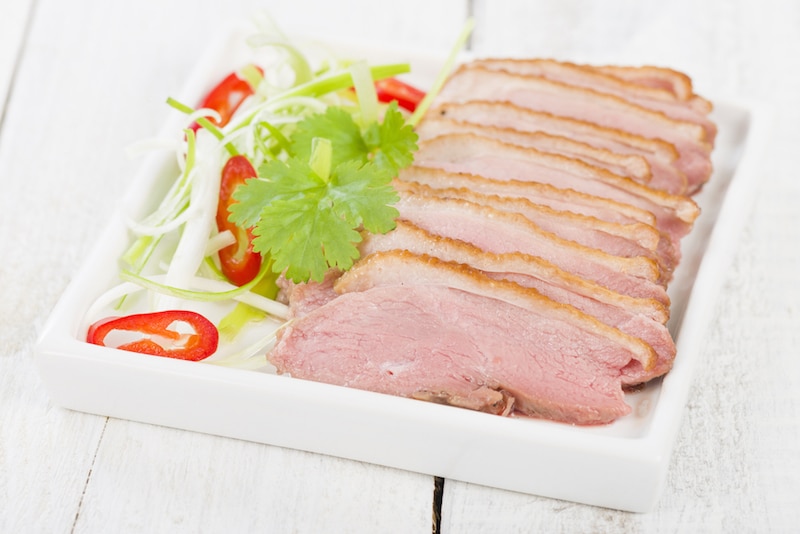
But Vietnamese cuisine also has several unique factors, one of which is the philosophy that is central to concocting a recipe.
The Vietnamese ideal for cuisine is in balancing five taste elements — spice, sour, bitter, salt and sweet. According to Vietnamese culinary tradition, each of the tastes corresponds with an organ of the body, in order, gall bladder, small intestine, large intestine, stomach and bladder.
The importance of the number five doesn’t stop there. Cooks also try to include five types of nutrients — powder, water, minerals, protein and fat, as well as five colors — white, green, yellow, red and black — in each dish. The resulting dishes are balanced and colorful, attractive to both the eye and the tongue.
This sense of culinary balance extends to a balance between “heating” and “cooling” properties of ingredients, properties that might not be immediately obvious to western diners. Duck meat, for example, is considered cool, and is thus served in summer with ginger, perceived as warm. Chicken, on the other hand, is a warm food, so it’s usually eaten in the winter, and served with a sour sauce, which is considered cool.
While these characteristics of Vietnamese cuisine predate French influence, they’re integral to understanding Vietnamese as a whole.
So Where Do The French Come In?
French colonialism in Vietnam left its mark in several ways.
When French colonists arrived in Vietnam, they brought several ingredients that did not yet exist in the East, such as asparagus and potatoes. The words for these ingredients evoke their origins: asparagus are known as Măng tây, or Western bamboo shoots. They are seen as a special occasion sort of vegetable; asparagus soup is a very common first course for weddings.
Potatoes are yet another vegetable introduced by the French, which is surprising in and of itself, because until Antoine Parmentier popularized them in the 18th century, a century before colonization, the French believed that potatoes were unfit for human consumption and used them as food for farm animals, especially pigs. Potatoes are called khoai tây or Western yam in Vietnamese, and while they are quite common, they’re not nearly as popular as local sweet potatoes.
Onions are one of the backbones of French cuisine. Known as hành tay or Western shallots in Vietnamese, they’re often quick-pickled and used as a garnish for other dishes.
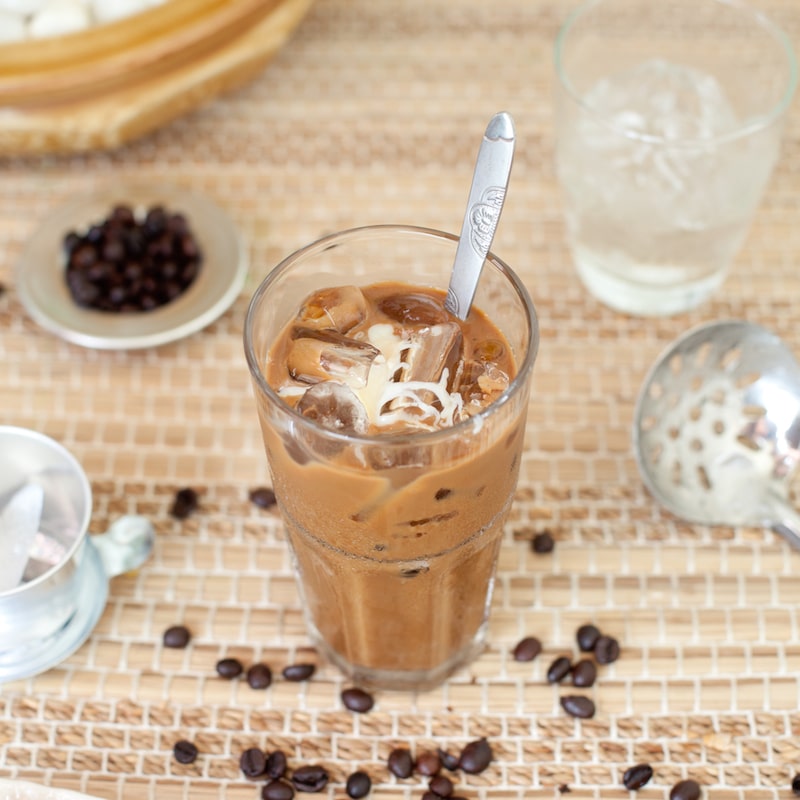
Coffee is yet another ingredient you’ll find more commonly in Vietnam than in surrounding areas. The French had started drinking coffee in the 1600s when it was introduced from the Middle East and brought it with them to Vietnam 200 years later. It was quickly adapted into the local cuisine and culture, largely because Vietnam has an excellent climate for growing coffee — the proof: today, Vietnam is the world’s second largest coffee exporter. As opposed to French coffee, which is usually served hot and black as espresso or with steamed milk as café au lait, Vietnamese coffee is usually drunk cold and sweetened with condensed milk.
But coffee is also a great example of how the locals in Vietnam absorbed the French influence. It wasn’t in accepting it as-is, but rather in integrating these new additions in their own way, tailoring the ingredients to their way of eating and cooking.
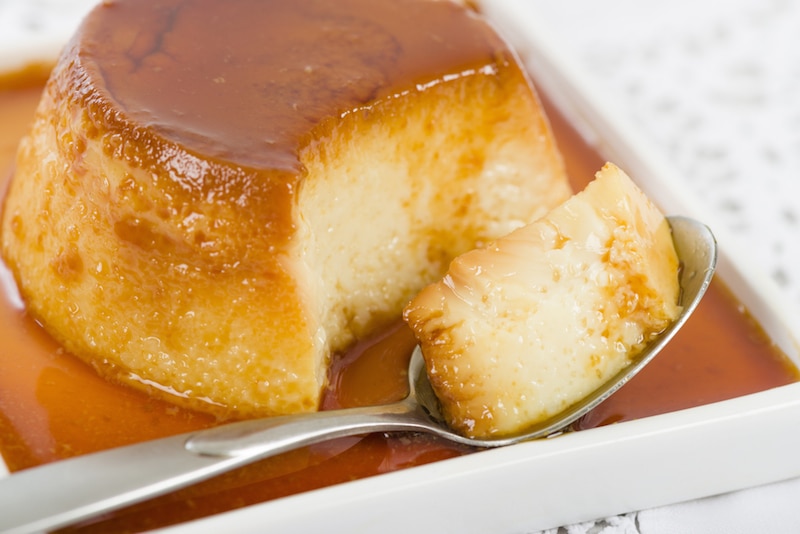
Cooked cream desserts like bánh flan, whose name and appearance belies its origins as crème caramel, are present in Vietnamese cooking. Often made with coconut milk instead of the milk and cream mixture used in France, the Vietnamese version of the dessert is flavored not with caramel but with coffee, an innovation that makes it extremely popular.
The same goes for bread. Bread is not common in East Asia, but when the French colonists arrived in Vietnam, you can bet they came armed with baguettes. The Vietnamese adapted this bread and began using it in their local cuisine; you can find Vietnamese baguettes even today on pretty much every corner.
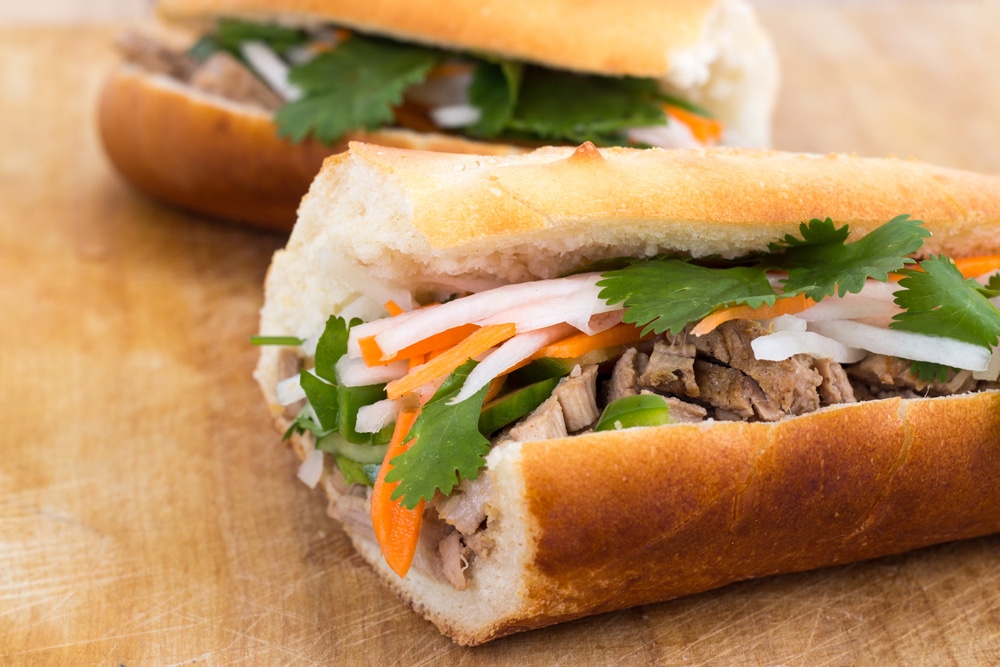
The other main difference between the two baguettes is in the style of the bread itself; while the Vietnamese style of baguette is similar to the French baguette, it is made with rice flour instead of wheat flour, giving it a wholly distinct flavor and texture. These baguettes are used as the base of one of the most famous Vietnamese dishes worldwide, banh mi. The sandwiches contain a combination of grilled meat, coriander, pickled vegetables and pâté, a true amalgam of the Vietnamese penchant for fresh herbs and crisp, raw vegetables and the French influences of pâté and meat.
A similar story is that of banh patê so, a clear carryover from Brittany’s meat pies. As though the influence wasn’t clear enough through the use of puff pastry to make these pies, the name is absolutely reminiscent of paté chaud, the Breton name of the dish. Other phonetically similar names like this exist in Vietnamese culinary culture, including dăm bông (jambon or ham), and xúc xích (saucisse or sausage).
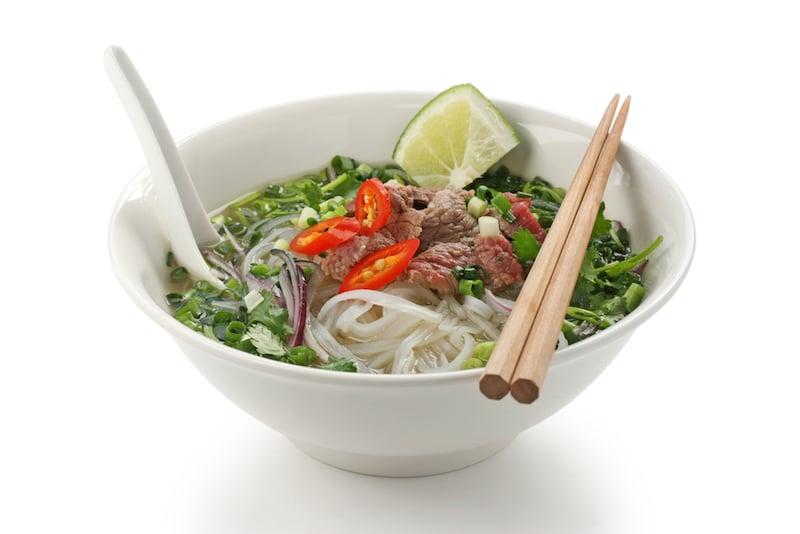
But perhaps the most surprising French influence in Vietnamese cuisine is the soup that seems emblematic of the cuisine itself: pho. Pho is a combination of Vietnamese rice noodles and French meat broths; some even say that the name pho, pronounced fuh, may be a Vietnamese appropriation of the French pot au feu or stew. The presence of beef — tripe, thinly cut raw steak and meatballs — further belies the European influence in this case, as beef is uncommon in other Eastern cuisines.
Not all similarities are quite so clear-cut, however. While the two cuisines couldn’t be more distinct at first glance, they share far more than meets the eye, regardless of history.
For instance, while the French are famous for the pungent aromas of garlic, onion and cheese in their cuisine, Vietnamese cooking, devoid in large part of dairy products, is famous for its fish sauce, which, like many cheeses, is supposed to only get better the more pungent an aroma it has.
While it may have appropriated some characteristics from the French, today’s Vietnamese cuisine is unique, a blend of these 19th century influences and the long history that preceded them.
Contributed by Emily Monaco

Jessica Festa is the editor of the travel sites Jessie on a Journey (http://jessieonajourney.com) and Epicure & Culture (http://epicureandculture.com). Along with blogging at We Blog The World, her byline has appeared in publications like Huffington Post, Gadling, Fodor’s, Travel + Escape, Matador, Viator, The Culture-Ist and many others. After getting her BA/MA in Communication from the State University of New York at Albany, she realized she wasn’t really to stop backpacking and made travel her full time job. Some of her most memorable experiences include studying abroad in Sydney, teaching English in Thailand, doing orphanage work in Ghana, hiking her way through South America and traveling solo through Europe. She has a passion for backpacking, adventure, hiking, wine and getting off the beaten path.








